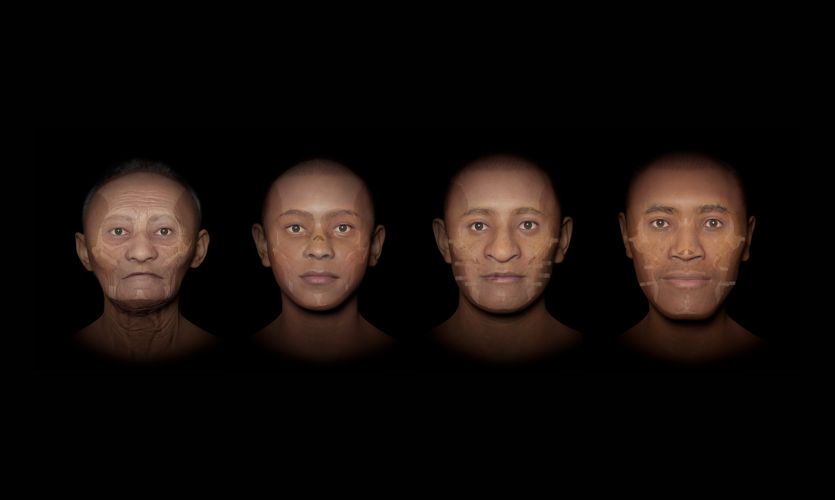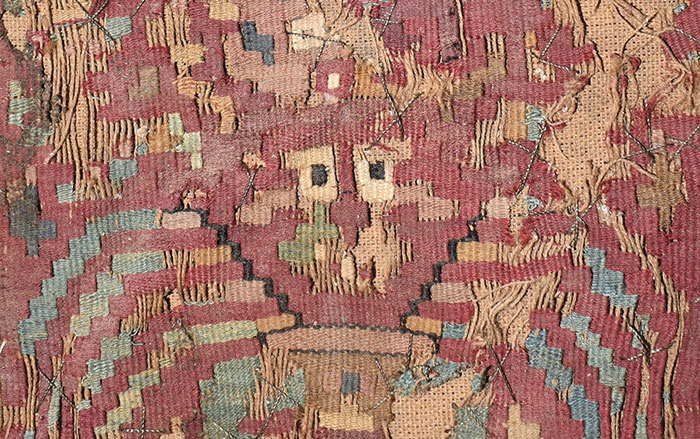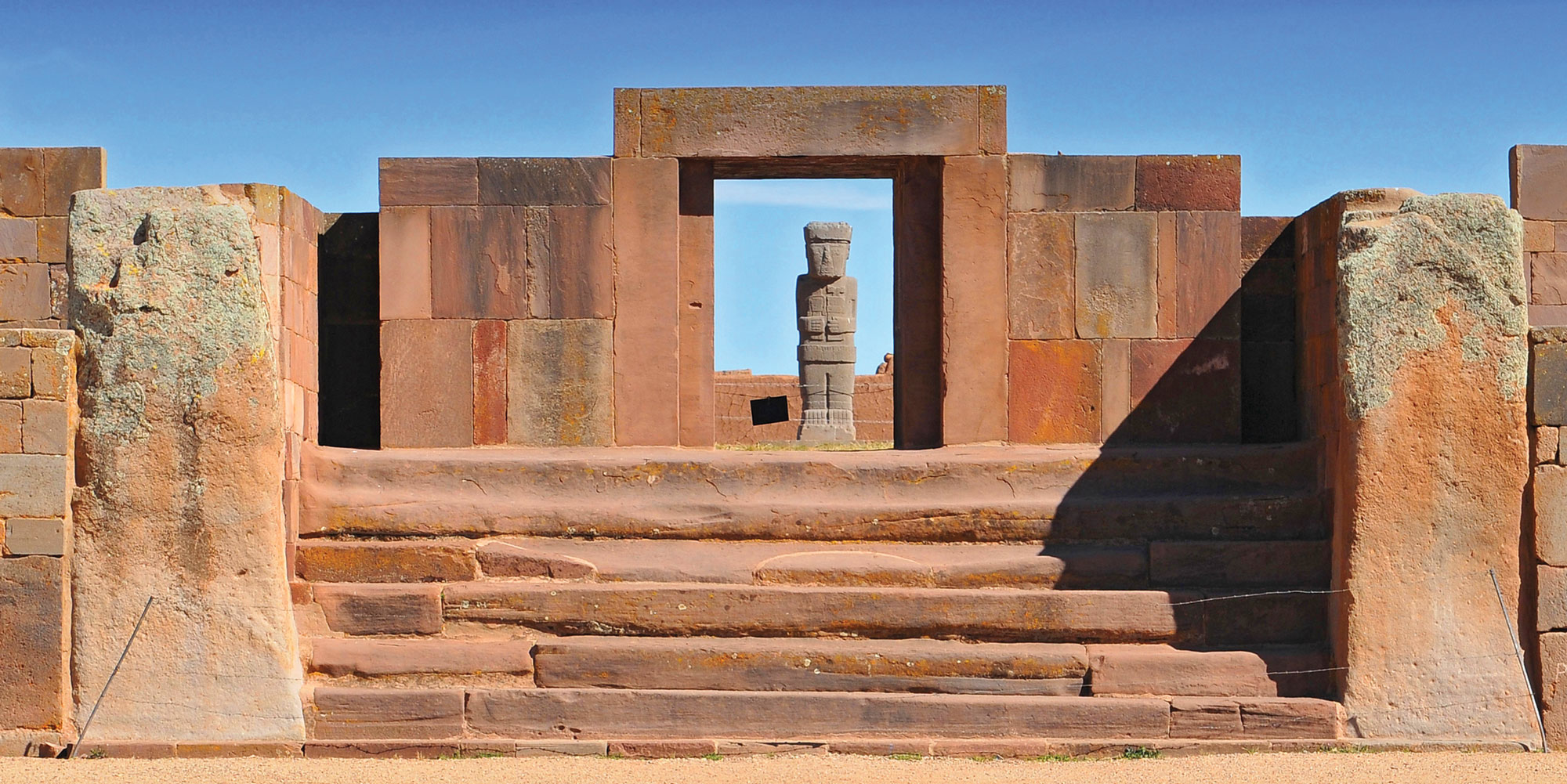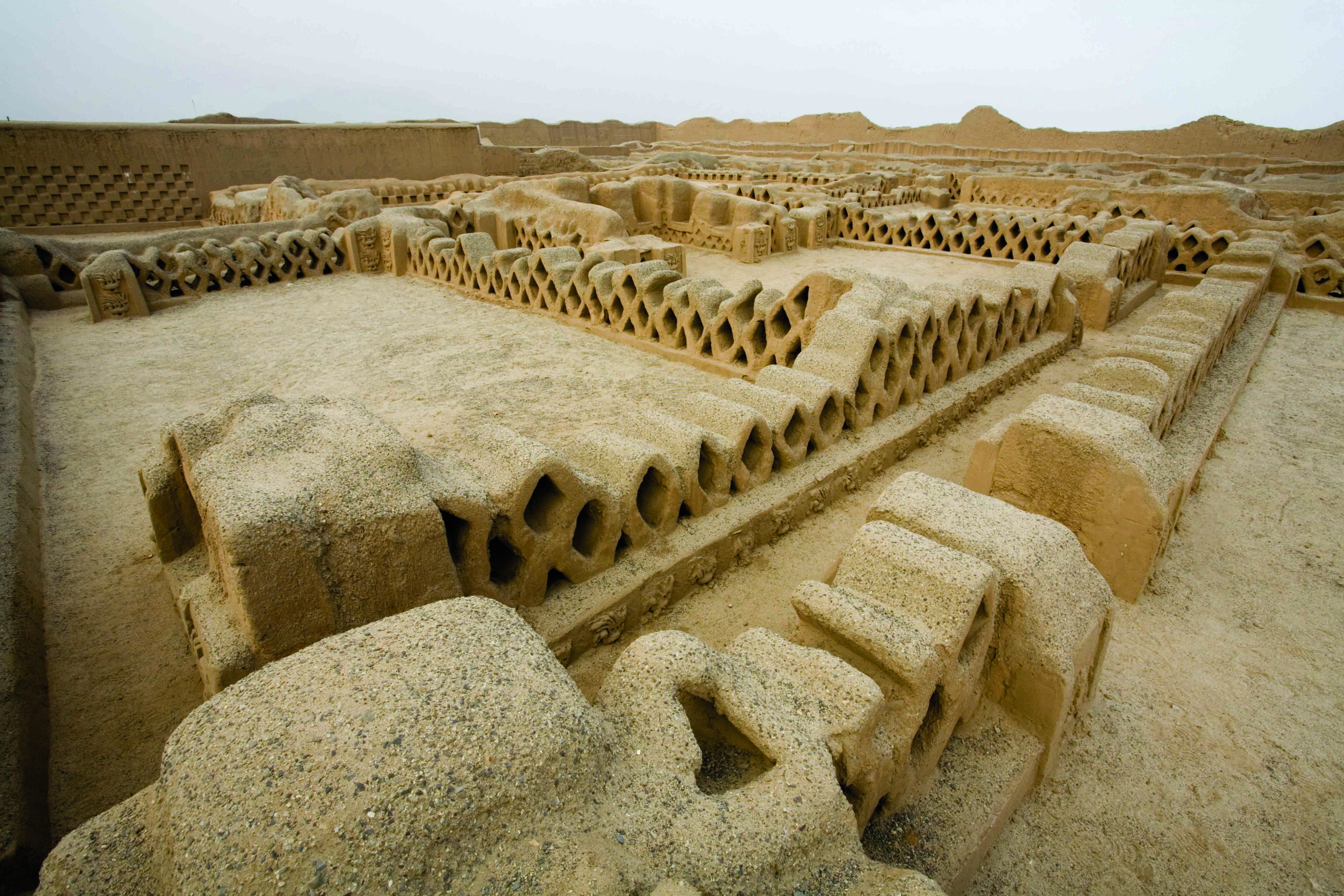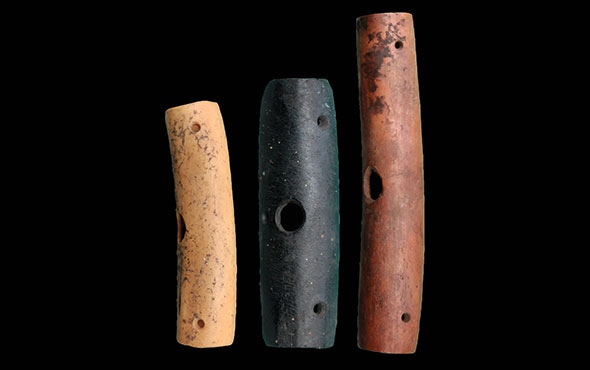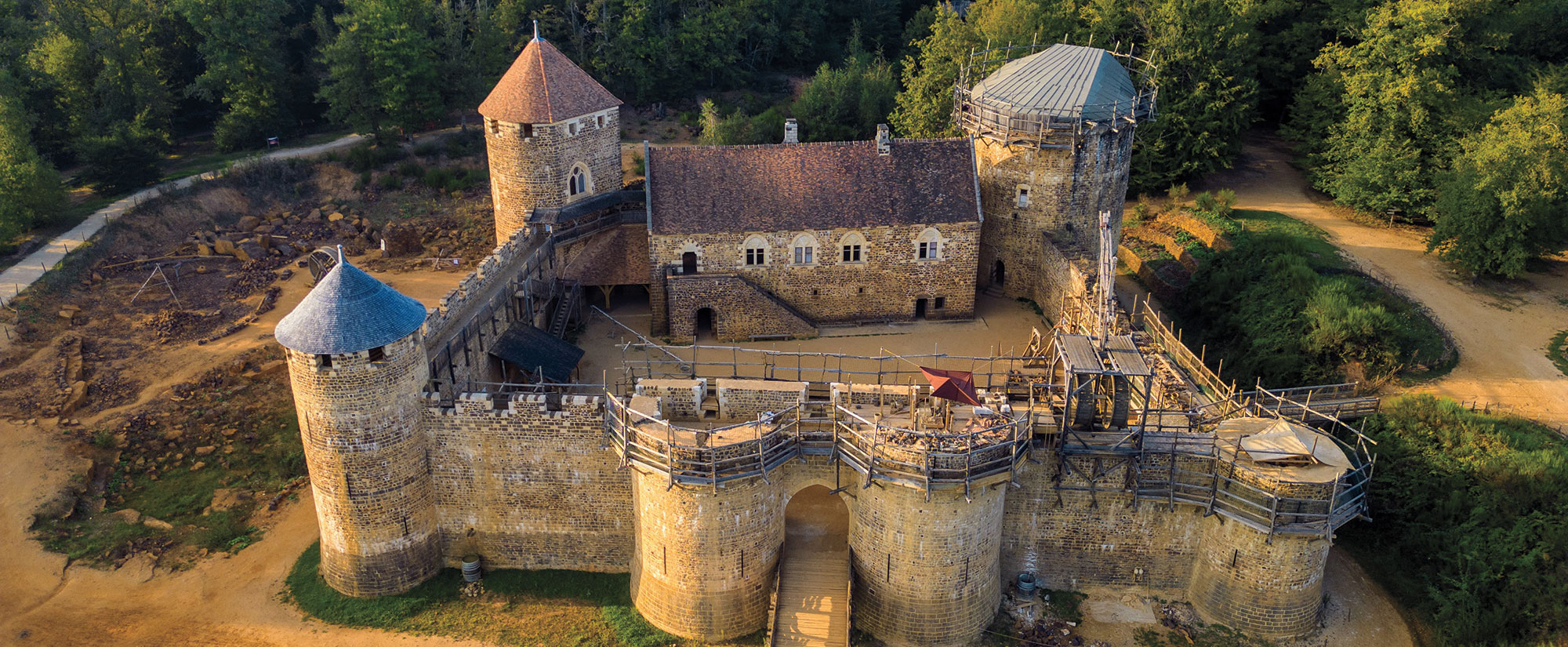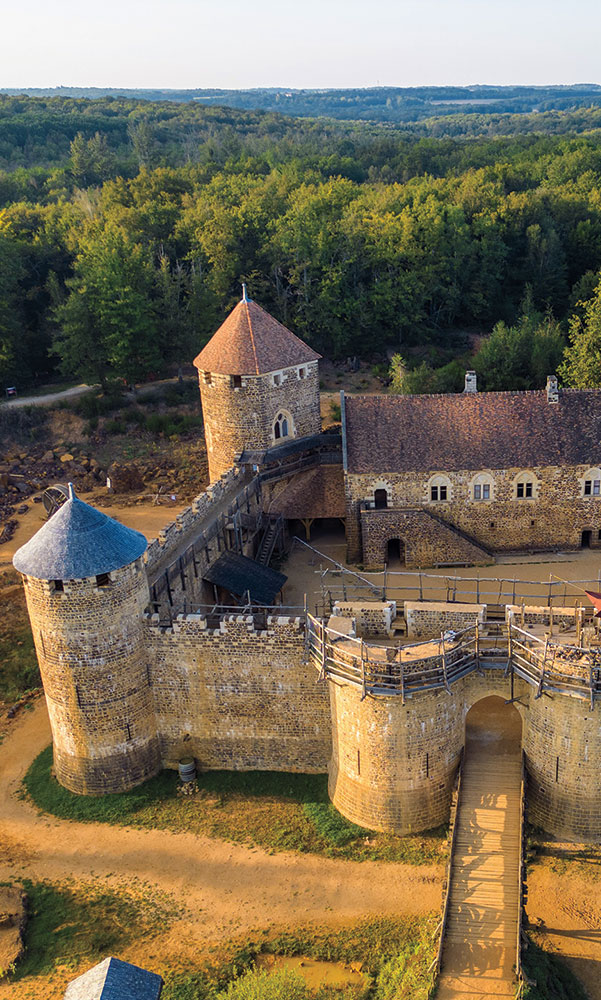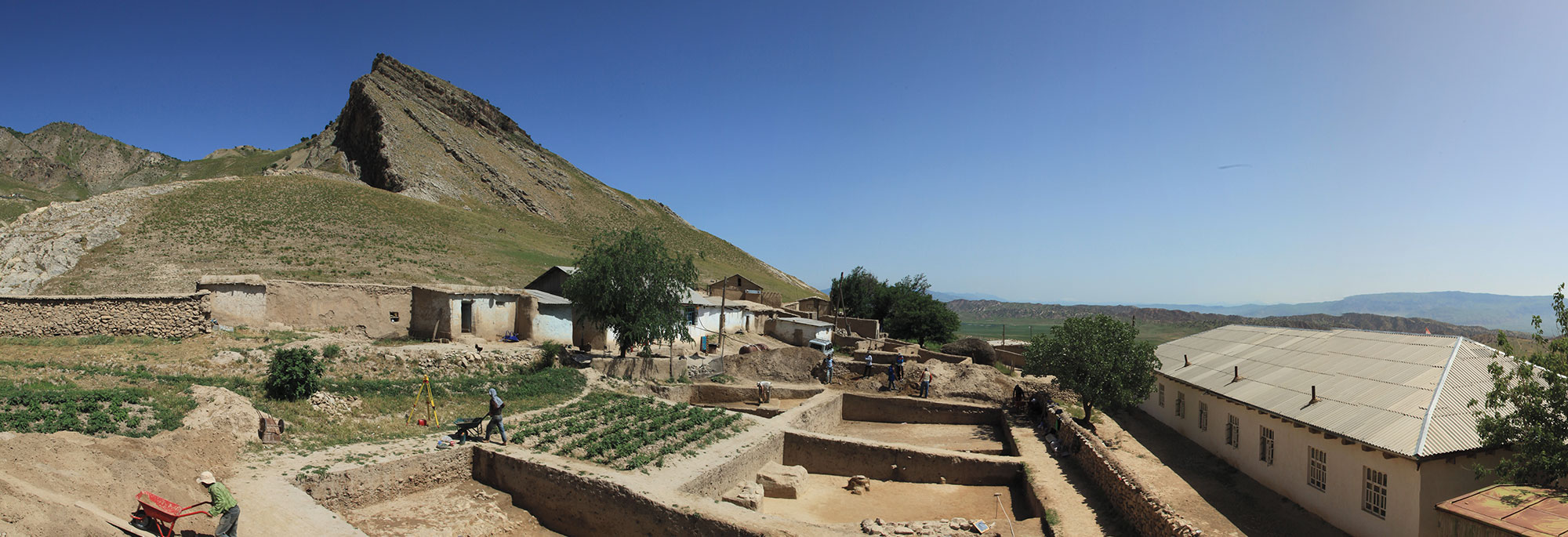LIVERPOOL, ENGLAND—Live Science reports that researchers from the Face Lab at Liverpool John Moores University have virtually reconstructed the faces of four people whose mummified remains were recovered in the Eastern Cordillera region of the Colombian Andes. Radiocarbon dating indicates that the remains date from the early thirteenth to the end of the eighteenth centuries A.D. The individuals include a child estimated to have been six or seven years old at the time of death, a woman in her 60s, and two young men. As part of the preparation of their bodies, the faces and jaws of the individuals were tightly fitted with death masks made of resin, clay, wax, and maize. All four of the masks are now missing pieces, but some ornamental beads outlining the eyes have survived. Face Lab project manager Jessica Liu and her team members used CT scans of the mask-covered skulls to begin the reconstructions. The researchers then digitally added muscles, soft tissues, and fat onto the virtual representations of the skulls to create images of the individuals as they may have appeared in life. Skin, eye, and hair color was applied according to typical traits or group averages of people living in the region today. But choosing the finer details of such portraits always raises questions. “Texture is always the biggest challenge,” Liu said. “Just because we simply don’t know how they would present themselves, whether or not they have any facial scarring or tattoos, or if that actually is the skin tone.” To read about ancient mummification practices elsewhere in South America, go to "The Desert and the Dead."
